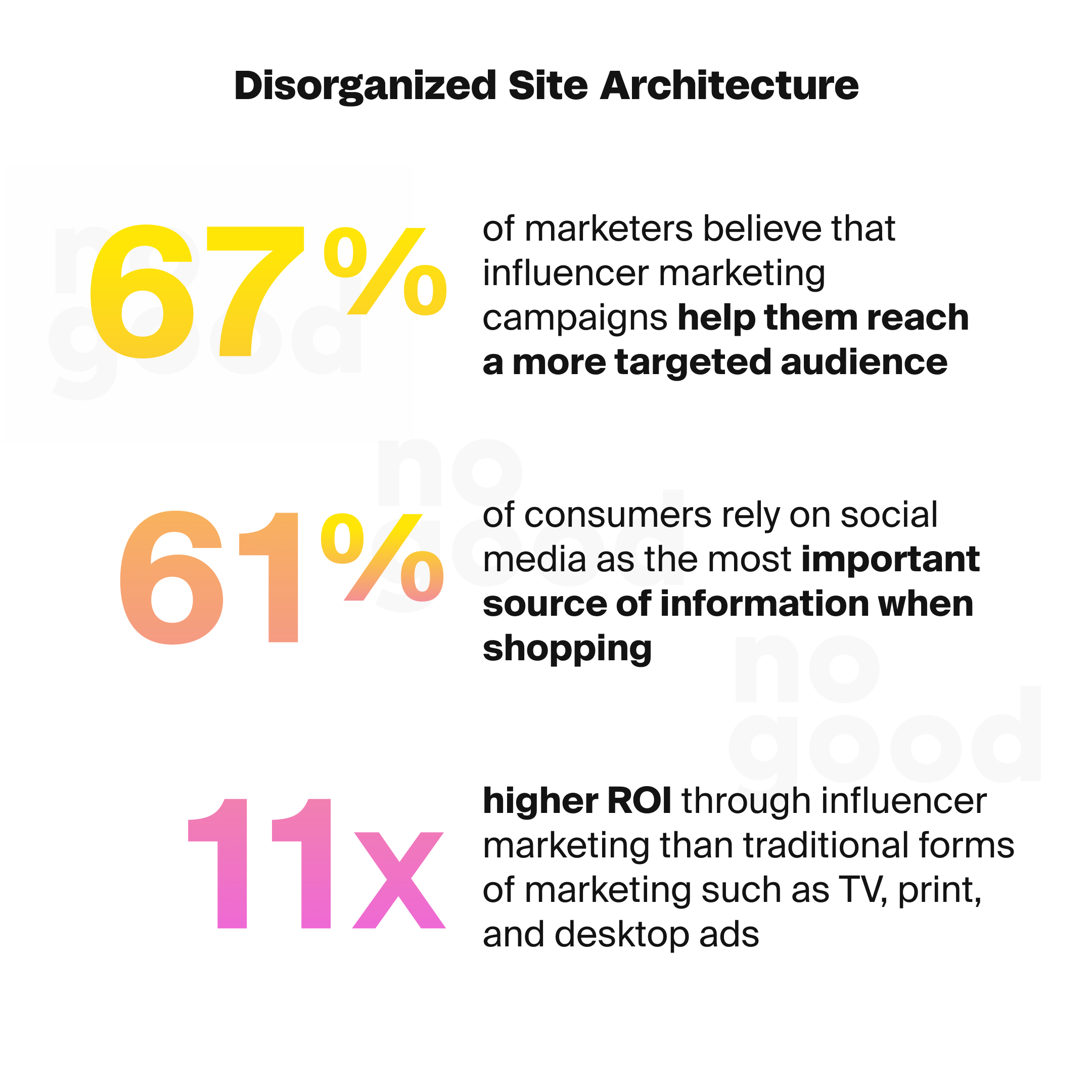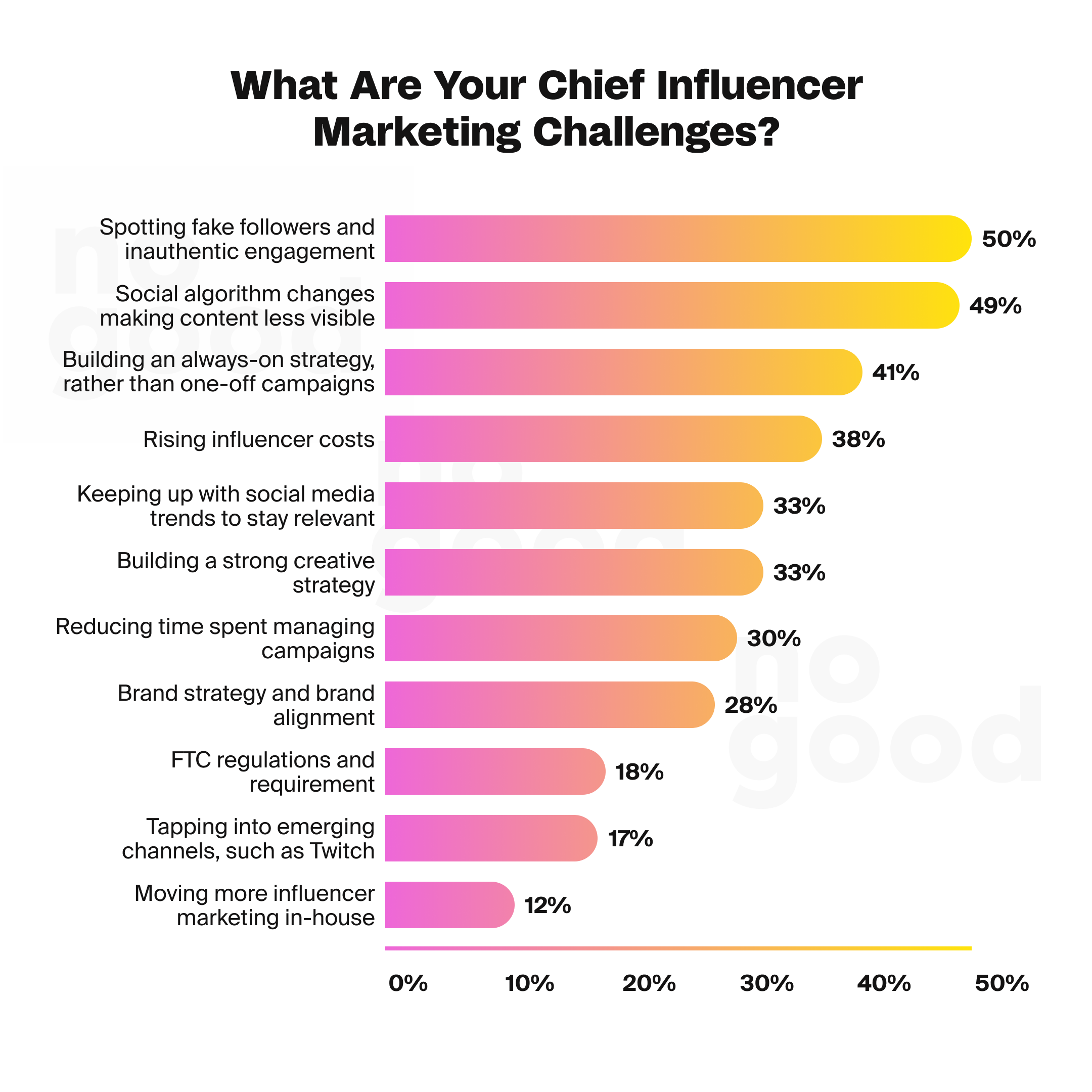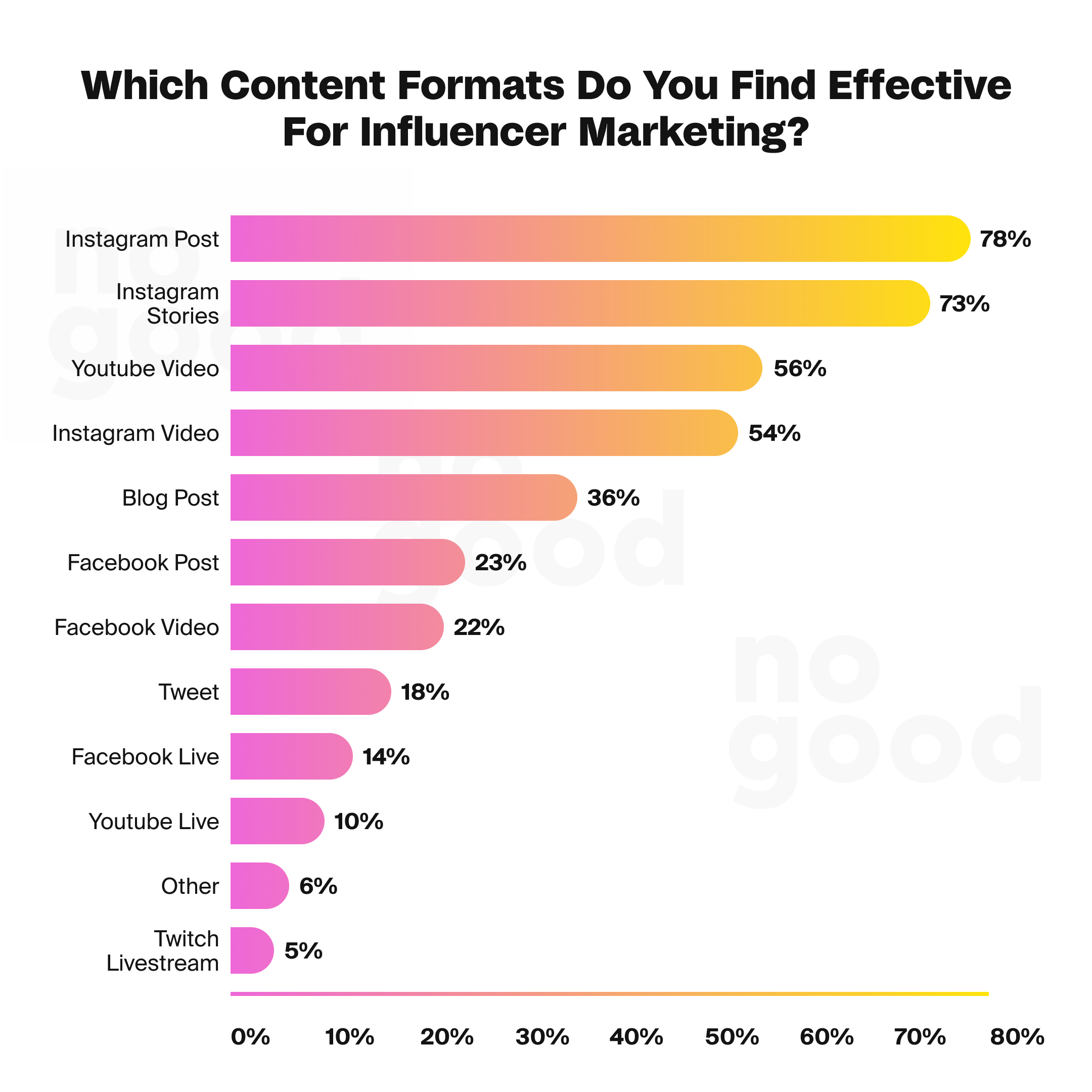Influencers have grown from a nice-to-have, experimental part of brand marketing to a ubiquitous force dominating the social space and a staple in most company budgets. While more and more brands leverage influencers over traditional ads to reach their target audiences, it has been increasingly more difficult to directly tie influencer activity back to lifts in sales and brand growth.
How do you decide a fair compensation amount for a post before knowing how it will perform? How do you attribute those performance metrics back to brand health and success? Cue the rise of performance-based influencer marketing. Here is everything you need to know for strategically partnering with influencers in a way that guarantees results.
How Does Performance-Based Influencer Marketing Work
The essence of performance-based influencer marketing is that the influencer’s results determine the degree of her or his compensation. Depending on the purpose of the activation, “results” come in a variety of performance metrics:
| Performance Metric: | Tool/Platform for Analysis: |
| Clickthrough rate | Landing page on website |
| Sales generated | Google Analytics |
| Traffic to a site | Google Analytics |
| Newsletter Sign-Ups | CRM |
| Downloads of a resource | Google Analytics |
Benchmarks of success for your key performance metrics depend on a variety of parameters- influencer marketing budget, quality of creative content creation, size of audience, other performance campaigns running, etc.- but in general, if your influencer campaign was a success, you will see significant upticks in the relevant data corresponding to the time of the activation.
Types of Performance-Based Influencer Partnerships:
The first is affiliate marketing, in which a brand provides influencers with a particular link or code to include within their high-quality content shared with their audience that will drive customers to a desired action. The brand can clearly track activity generated from that specific link or code and pays the influencer according to the amount of traction gained. If the intended ideal customer action were actual sales, the payout could be a certain amount per sale, a percentage of the overall sales, a percentage for the first 100 sales with a lower rate for everything after, and so on. Thus, the guesswork is taken out of how much “value” the relationships with influencers bring to the brand, and the compensation model expectations are both fair and clear.
On the other hand, a brand could do a paid campaign, in which the potential influencer is paid a flat fee upfront and potentially more post-campaign, depending on performance marketing metrics. A brand could request an influencer’s engagement rate or results from a previous marketing campaign as validation that she or he has an active audience and that working with this public figure has and will yield results. CPMs differ, but the industry average is around $10. For example, an influencer with $100,000 would have a rate of $1,000 a post. The brand can still provide its favorite influencer with individualized links or codes to share and may opt to reward an additional percentage per sale, search clicks, etc., in response to the results. In this performance-based model, the value the influencer brings is predicted beforehand and can be verified after.
Pros and Cons of Performance-Based Influencer Marketing
The Strengths
This model addresses the pain points of traditional influencer marketing while retaining the benefits. Instead of hiring a professional photographer to produce eye-grabbing assets, the influencer does the work of creating quality content for you at a cheaper rate. As consumers have a growing aversion to performance advertising bombardment and quickly skip or swipe past ads, the familiar, less intrusive look of an influencer’s lifestyle post slows them down. If chosen correctly, the influencer can expand your brand’s reach to an ideal community. Furthermore, the strongest influencers amass loyal followers who genuinely trust her or his judgment and are more likely to consider their recommendation for a product in mind or service because it feels like a friend’s referral.
Using performance-based influencers, in particular, lowers the risk of wasted budget in trying out an influencer marketing strategy. You can ensure that you are not over or undervaluing the influencer for their work. In the past, influencers could just flash a high follower count as proof that they were worth a given strategic partnership (or higher price tag). Now, requesting performance metrics helps weed out partnerships that would be smoke and mirrors- flashy content without real conversion or drive in revenue growth. Followers and post volumes are vanity metrics – they don’t tell you if the audience is actually bought in. Post engagement rates (calculated as average engagements/followers) show that many of their followers are actively following.

The Challenges
Likes and comments don’t necessarily equate to conversion. Some users may follow a public figure simply for aesthetics – they like the influencer’s look or find them entertaining- so they will happily double-tap or share but be more reluctant to hand over their information or credit card. This is where requesting a sample of previous work and the results achieved may be beneficial. That said, what works for one company or brand isn’t guaranteed to work for another, especially across different industries.
In general, the Influencer empire is on the decline, with engagement rates hovering at an all-time low. The way consumers became worn out by constant ads, consumers are again getting fatigued with #SponCon. The unending stream of sponsored posts gives each post a little less weight. Most consumers understand the incentive behind sponsored posts is a paycheck, not always a sincere love of the brand. This beckons a question of balance: you want an influencer who is comfortable promoting brands, but if every post is marked by #ad, your brand may seem like a drop in the sea.

Four Things to Consider Before Starting Influencer Marketing
Do Your Research
Before your brand reaches out to an influencer, first make sure the partnership fits both parties. Facebook, Instagram, and almost every other influencer channel have audience insights tools that will show metrics about location, age, and interests. Have a clear grasp on who your brand’s current target customers are- as well as your competitors- and request a similar audit of the influencer’s audience demographics to ensure they overlap.
There are also tools, such as Demographics Pro, that aggregate a more in-depth audience analysis from every channel for both brands and influencers. If your company is multifaceted, with several main products or claims, use AI tools like these to cluster your audience and create segments. Consider which segments are the highest priority or have yielded the best results in organic and paid.
Purpose over Popularity
It goes without saying that in performance-based influencer marketing, quality wins over quantity. Micro-influencers, public figures who have between 10K to 100K followers, often don’t have celebrity status but a stronger connection to their audience because their content caters to a particular niche. If your purpose is to reach a specific customer persona, you will find success pairing with a micro-influencer who delivers content fine-tuned for that persona.
A step further, if there is a specific geographic region or establishment highly dense with your ideal customer, this may be an opportunity to leverage nano-influencers. These are figures with under 10K followers who tend to have a local, in-person influence, such as a community leader, highly ranked member of a company or school, local pastor, etc. The real-life connection they have to their network extending beyond the screen gives their voice an authentic authority that will convert.
Reason with Reach
It is still possible for the lower end of macro-influencers, defined by 100K or more followers, to have a community aligned on a niche topic, which could be a great partnership for growing your brand. Due to the higher following, content from a macro-influencer naturally garners a larger number of impressions, expanding your brand’s awareness. If you were to do a paid campaign with a base rate, an influencer with 200K followers would generally charge more than a 12K influencer because of that added value. However, their engagement rates tend to be lower than those of micro-influencers, who tend to have a broader and more varied audience type. In this example, if the 12k influencer has an engagement rate of 20% while the 200K hovers at 1%, the smaller figure is actually reaching more people.
A savvy influencer strategy would be to mix and match, leaning toward more partnerships with micro-influencers but maintaining a proportion of macro-influencers to reap the best of both worlds. Additionally, If your company has multiple key value propositions and audience segments- for example, a food brand that is both vegan and sustainably sourced– you can try employing some vegan community influencers and some who focus on responsibly sourced nutrition. You could then win loyalist consumers for both and compare the response key metrics to see which angle is strongest for your brand.
Strengthen your story through Stories
While most companies direct attention to the influencer’s in-feed post, Instagram or Facebook stories are a critical piece of the performance puzzle. Vickie Segar, founder of influencer agency Village Marketing, remarks, “There’s way more trackability with Instagram Stories than with the feed, and that’s simply because you can [put links and have people] swipe up.”
She added that, in general, companies have recently put more emphasis on tracking stories, but with her clients, they’re doing 90% Instagram Stories and 5%-10% Instagram feeds, with some moving entirely to Instagram Stories. Stories performance is more clear-cut than post-performance, and it’s easier for a user to directly swipe up to a landing page than to tap a link in the bio. Additionally, influencers can repost their post onto their story to doubly expose their followers and catch those who wouldn’t see it in the feed.

Moreover, users tend to be more engaged story-viewers than feed-scrollers. Instagram has even experimented with a “stories-first” model after tracking that several users were spending more time tapping through Stories up top than scrolling down their newsfeeds. The stories experience is more dynamic with the ability to add gifs, stickers, geotags, music, ask questions, reply directly to messages, and more, giving the influencer more ways to be creative in grabbing the potential consumer’s attention.
Instagram or Facebook Story videos allow for additional context, as influencers can talk through why they love your brand or demonstrate visually how they use it in a way that feels more relatable and can be less “polished” than a static post. As you outline content expectations with an influencer, be sure to include guidelines for stories to enhance the promotion.
The Takeaway
As influencers have transitioned from experimental marketing to indispensable players in brand promotion, the paradigm shift toward performance-based influencer marketing is undeniable. This transformative approach, hinging on key performance indicators such as clickthrough rates and conversion rates, has redefined compensation structures, fostering transparency and equity. The two primary models, affiliate marketing and paid campaigns, offer distinct yet viable paths for brands.
Despite the industry grappling with declining engagement rates and influencer fatigue, the strategic selection of influencers based on meticulous research and purpose-driven partnerships can yield significant returns. Integrating Instagram and Facebook Stories emerges as a pivotal strategy for enhanced engagement and trackability. In the ever-evolving landscape of influencer marketing, strategic planning and a focus on performance-based metrics are crucial for brands seeking a valuable return on investment in 2024.
So, if you are a small to medium-sized business generating $3M+ in annual revenue and looking for an agency to take the hard work off your plate, feel free to reach out to our team for a consultation.





